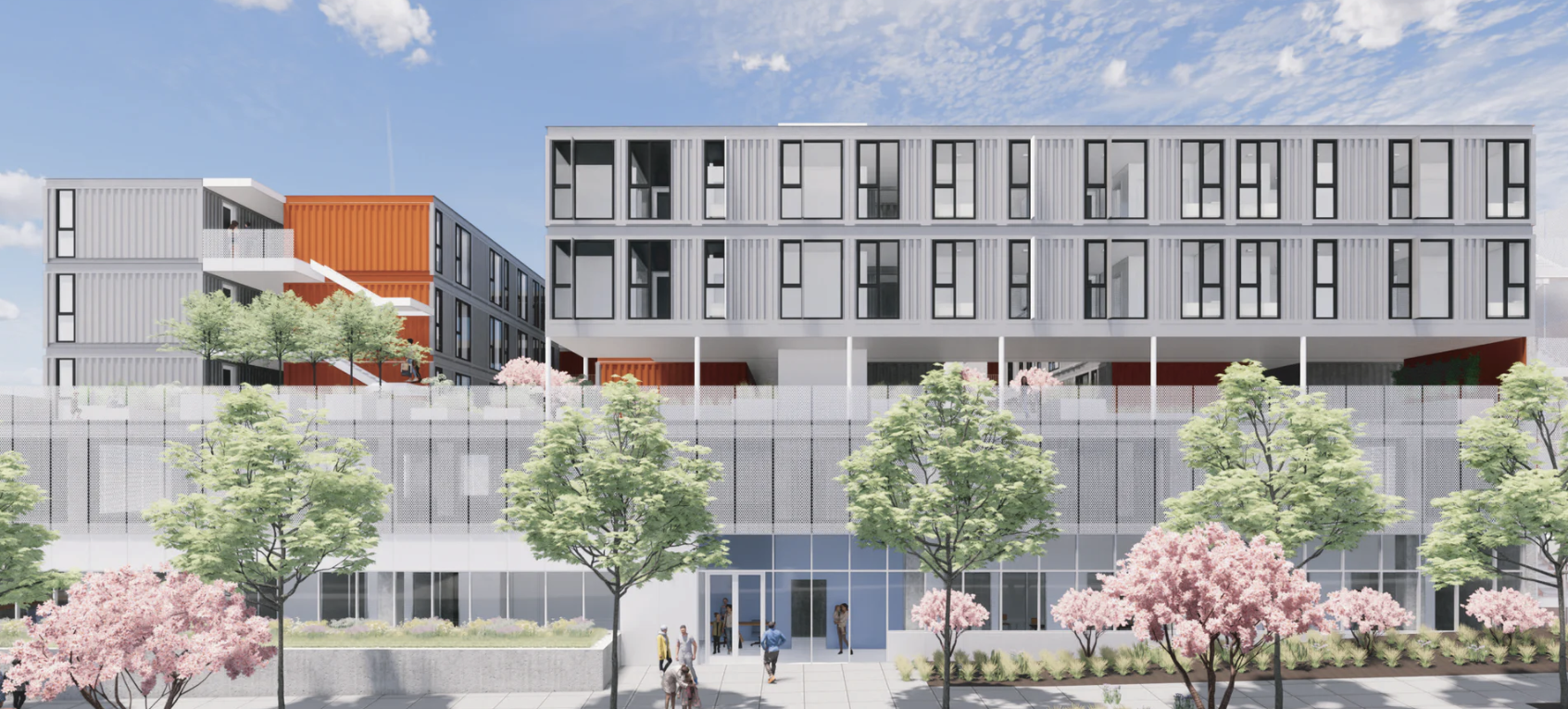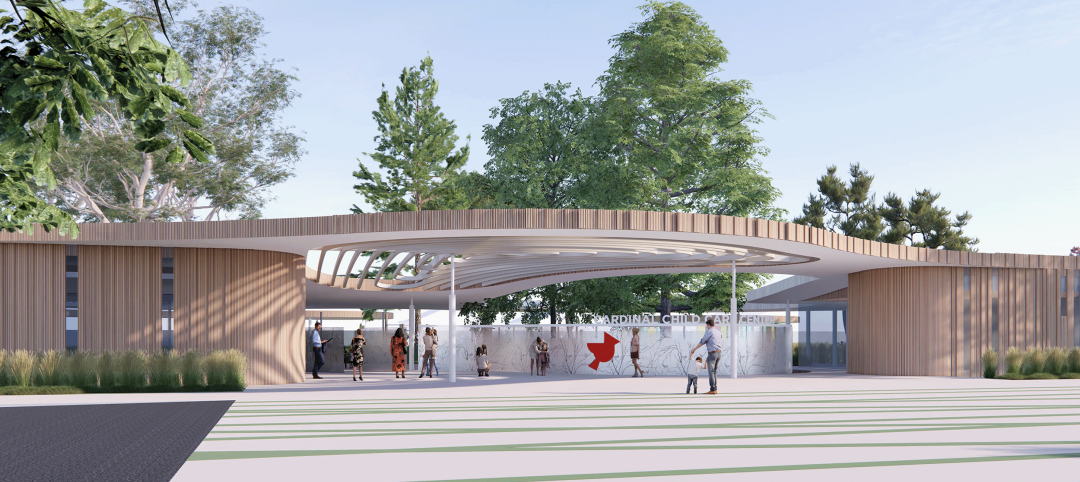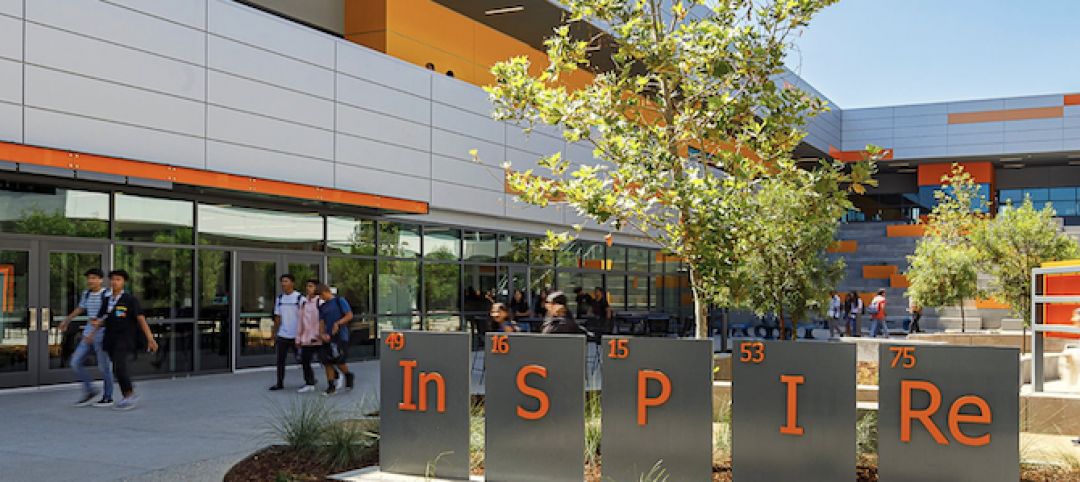Go to any fast-growing neighborhood in a U.S. city, and you’re sure to find them: bland, boxy and downright boring apartments and housing developments, with a seemingly endless sea of flat windows and colored panels. These types of new developments — jokingly referred to as McUrbanism, fast-casual architecture, even Minecraftsman — fail by repetition. In search of affordability and ease, they lean into solutions that apply the logic of speed and simplicity to a project, plastering a sense of sameness onto a vibrant city street.
To create buildings and homes that truly reflect the diversity of different neighborhoods, housing developers and architects should stop applying design formulas and instead react and respond to each street and site. Our design philosophy for housing needs to be less about repetition and more about echoing the community context with an approach based on urban design.
To bring forward design that actually enhances the existing community, you must really understand a place. Modern design today should be about customization and clarity and a balance of scale and texture. It’s not forcing a single vision or approach. More than an aesthetic improvement, it’s about creating more value for the development team and a mixed-use project that aligns with the neighborhood and its residents.
A current LPA project in Boise, Idaho, exemplifies the benefits of this kind of approach. Within a master-planned suburban area, one that might stereotypically be filled with carbon-copy housing, we’re designing compact, five-story residential mid-rise developments surrounding a large landscape and park. By creating an open town square, the layout adds a sense of place within the development, focused on creating a true urban village that balances private and public space. Intelligent, efficient design of the units and density allows for focus and investment in a shared amenity that makes every home feel singular and makes every resident’s experience more socially connected. Activating the public realm, with shared space as well as office and retail, activates community
Focusing on these elements doesn’t merely improve livability. Done right, they can help create density and efficiency, minimizing the overall footprint and opening up space for features that, like the Boise town center, benefit the community.
In addition, this approach picks up on neighborhood context and focuses on vernacular design. Contextual facades, windows and outdoor spaces, such as vertical gardens and rooftop patios, can visually complement surrounding structures, especially with artful variation. Such features also take advantage of the environment, providing comfort for residents by maximizing access to daylighting, shade and breezes.
This approach of echoing and enhancing the neighborhood fabric also builds more sustainable communities. Time-tested vernacular approaches offer energy-efficiency benefits. Smart design can also standardize indoor aspects, like kitchens and bathrooms, which add incredible economies of scale to a project. Systematizing some of the core designs of a project allows for centralized high-performance energy systems, including water and fully electrified homes, which cut down on emissions and indoor air pollution. There can be a good kind of repetition, one that standardizes products and construction processes to allow more investment and flexibility on the more social aspects of a project.
Sustainability can be a bridge between environmental and energy goals and the larger vision of creating a more shared community; they all contribute to a healthier environment. Adding outdoor areas preserves rooftops for solar panels, and efficient land use means more shared green space, walkable neighborhoods and outlets for socializing.
This level of design and intent should never be seen as a luxury. Every neighborhood is unique and, by definition, demands a unique approach via principled planning. And every project, before it’s built, always spends time in the public eye, being judged by a community keen to find a good neighbor focused on community-building, not commoditization.
Given that most urban projects are infill rather than greenfield development, sensitive design is key to reflecting the context and culture of each neighborhood. It reacts to the elements and local climate in a more sustainable, sensible way. Contextual, adaptive design isn’t about spending more or having a less transformative vision. With design elements and façades that reflect and complement the environment, it’s more about creating real value. Projects focused on placemaking and elevating a site get expedited … and embraced by the community.
ABOUT THE AUTHOR
Matthew Porreca, AIA, LEED AP BD+C, NCARB, Design Director with LPA Inc., has more than 25 years of experience leading integrated design teams that have produced award-winning, high-performance buildings. As design director, Matthew emphasizes a collaborative approach that looks for innovative solutions to complex issues. He leads design charrettes, facilitates discussions with the core team and stakeholders, and helps establish the design direction for the project. His expertise extends to functional design, technical integration, use of innovative materials, long-range scheduling and overall project management.
Matthew’s influence can be found on large-scale office and civic projects around the country, including intricate corporate campuses and iconic museum and performing arts facilities. On every project, he looks for innovative ways to develop better performing buildings with healthier environments. He has led the design of several net-zero projects and won awards for his efforts to develop buildings that save energy through passive and natural strategies.
Matthew was the founding co-chair of the Living Building Collaborative in San Diego.
More from Author
LPA | Aug 26, 2024
Windows in K-12 classrooms provide opportunities, not distractions
On a knee-jerk level, a window seems like a built-in distraction, guaranteed to promote wandering minds in any classroom or workspace. Yet, a steady stream of studies has found the opposite to be true.
LPA | May 13, 2024
S.M.A.R.T. campus combines 3 schools on one site
From the start of the design process for Santa Clara Unified School District’s new preK-12 campus, discussions moved beyond brick-and-mortar to focus on envisioning the future of education in Silicon Valley.
LPA | Mar 28, 2024
Workplace campus design philosophy: People are the new amenity
Nick Arambarri, AIA, LEED AP BD+C, NCARB, Director of Commercial, LPA, underscores the value of providing rich, human-focused environments for the return-to-office workforce.
LPA | Feb 8, 2024
LPA President Dan Heinfeld announced retirement
LPA Design Studios announced the upcoming retirement of longtime president Dan Heinfeld, who led the firm’s growth from a small, commercial development-focused architecture studio into a nation-leading integrated design practice setting new standards for performance and design excellence.
LPA | Mar 2, 2023
The next steps for a sustainable, decarbonized future
For building owners and developers, the push to net zero energy and carbon neutrality is no longer an academic discussion.
LPA | Dec 20, 2022
Designing an inspiring, net zero early childhood learning center
LPA's design for a new learning center in San Bernardino provides a model for a facility that prepares children for learning and supports the community.
LPA | Aug 22, 2022
Less bad is no longer good enough
As we enter the next phase of our fight against climate change, I am cautiously optimistic about our sustainable future and the design industry’s ability to affect what the American Institute of Architects (AIA) calls the biggest challenge of our generation.
LPA | Aug 9, 2022
Designing healthy learning environments
Studies confirm healthy environments can improve learning outcomes and student success.
LPA | Mar 21, 2022
Finding the ROI for biophilic design
It takes more than big windows and a few plants to create an effective biophilic design.
LPA | Apr 28, 2021
Did the campus design work?
A post-occupancy evaluation of the eSTEM Academy provides valuable lessons for future campuses.
















